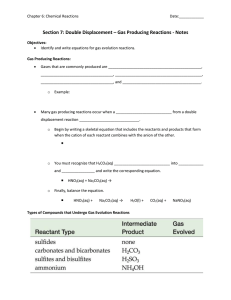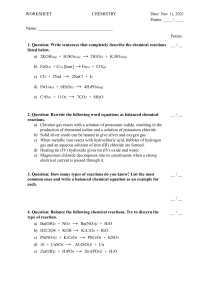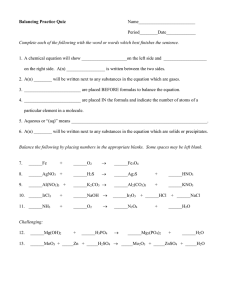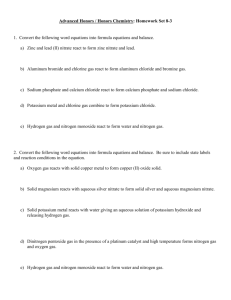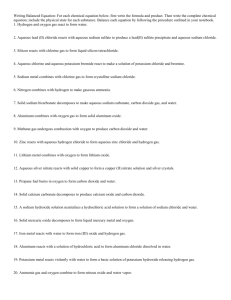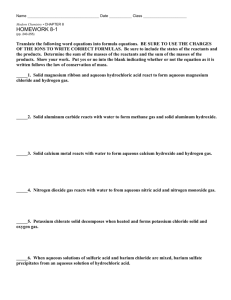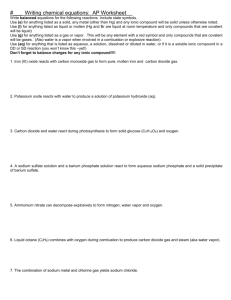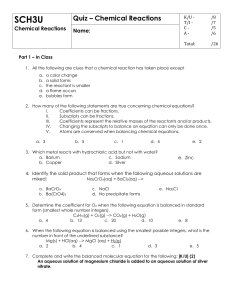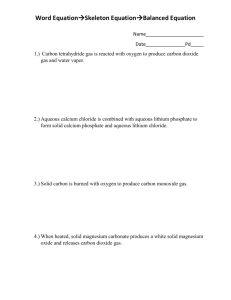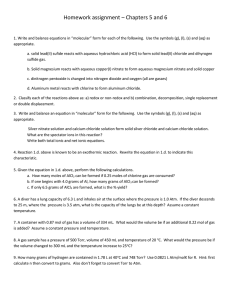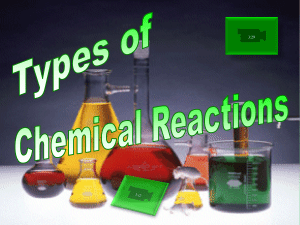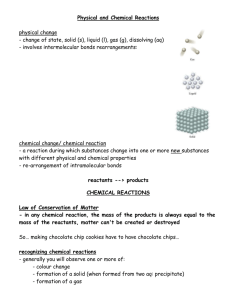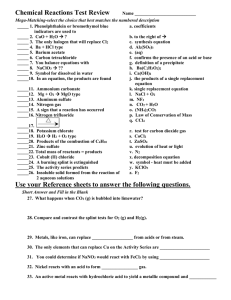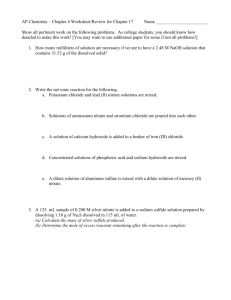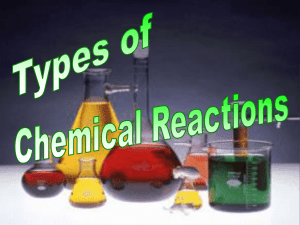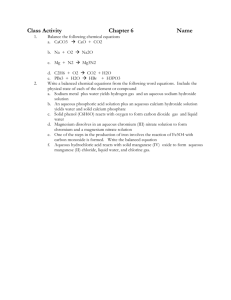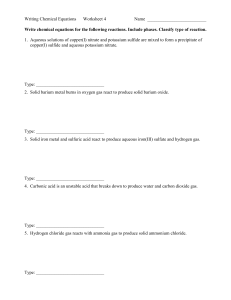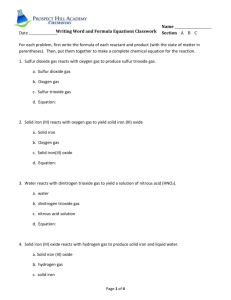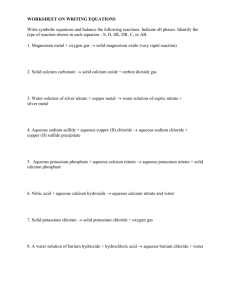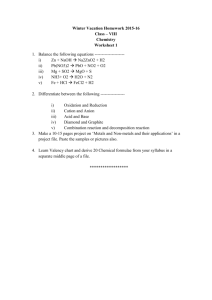WS 2 answers
advertisement
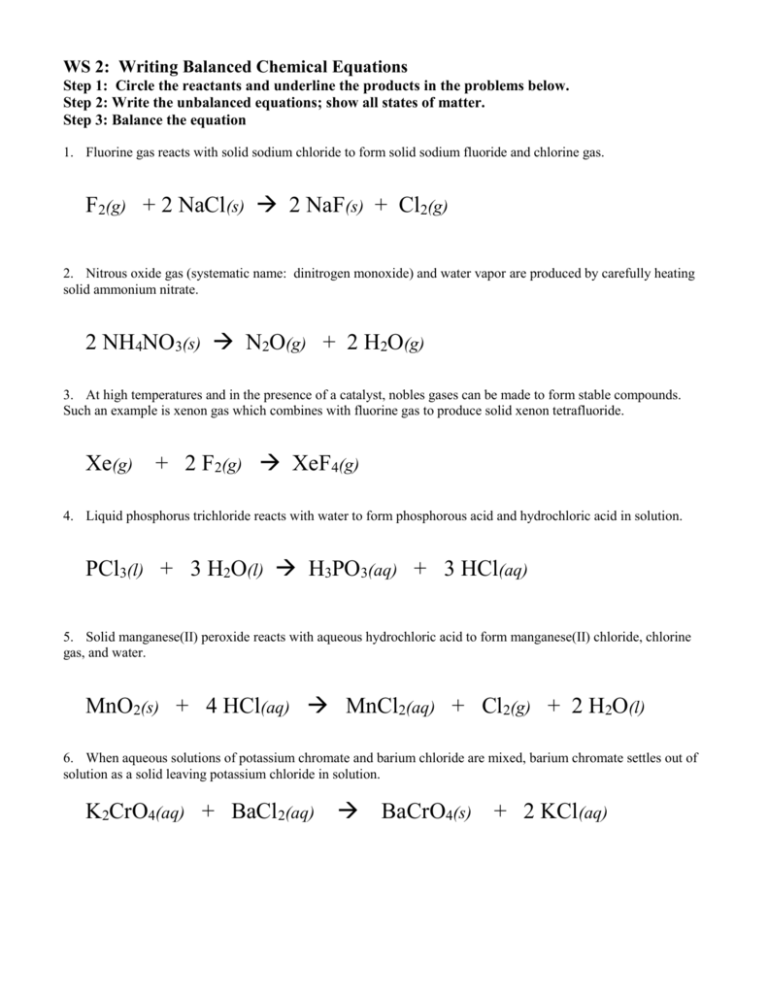
WS 2: Writing Balanced Chemical Equations Step 1: Circle the reactants and underline the products in the problems below. Step 2: Write the unbalanced equations; show all states of matter. Step 3: Balance the equation 1. Fluorine gas reacts with solid sodium chloride to form solid sodium fluoride and chlorine gas. F2(g) + 2 NaCl(s) 2 NaF(s) + Cl2(g) 2. Nitrous oxide gas (systematic name: dinitrogen monoxide) and water vapor are produced by carefully heating solid ammonium nitrate. 2 NH4NO3(s) N2O(g) + 2 H2O(g) 3. At high temperatures and in the presence of a catalyst, nobles gases can be made to form stable compounds. Such an example is xenon gas which combines with fluorine gas to produce solid xenon tetrafluoride. Xe(g) + 2 F2(g) XeF4(g) 4. Liquid phosphorus trichloride reacts with water to form phosphorous acid and hydrochloric acid in solution. PCl3(l) + 3 H2O(l) H3PO3(aq) + 3 HCl(aq) 5. Solid manganese(II) peroxide reacts with aqueous hydrochloric acid to form manganese(II) chloride, chlorine gas, and water. MnO2(s) + 4 HCl(aq) MnCl2(aq) + Cl2(g) + 2 H2O(l) 6. When aqueous solutions of potassium chromate and barium chloride are mixed, barium chromate settles out of solution as a solid leaving potassium chloride in solution. K2CrO4(aq) + BaCl2(aq) BaCrO4(s) + 2 KCl(aq) 7. When lead(II) sulfide is heated to high temperatures in pure oxygen gas, solid lead(II) oxide forms with the release of gaseous sulfur dioxide. 2 PbS(s) + 3 O2(g) 2 PbO(s) + 2 SO2(g) 8. Aqueous magnesium nitrate reacts in solution with aqueous potassium hydroxide to yield a magnesium hydroxide precipitate and dissolved potassium nitrate. Mg(NO3)2(aq) + 2 KOH(aq) Mg(OH)2(s) + 2 KNO3(aq) 9. Solid mercury(I) oxide when heated yields pure mercury metal and oxygen gas. 2 Hg2O(s) 4 Hg(l) + O2(g) 10. Carbon dioxide gas and water vapor are produced when ethane gas (C2H6) burns in the presence of atmospheric oxygen. 2 C2H6(g) + 7 O2(g) 4 CO2(g) + 6 H2O(g)
